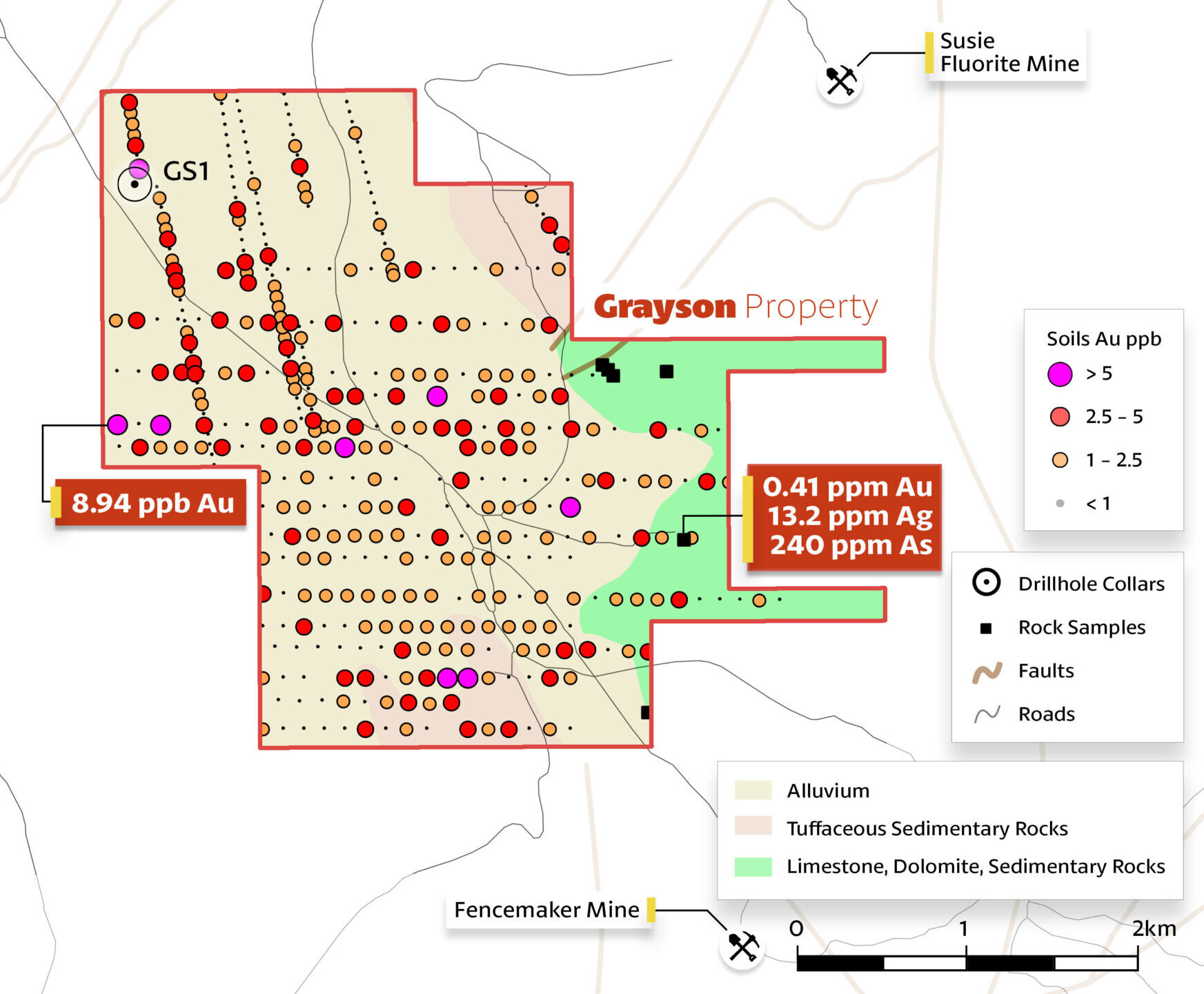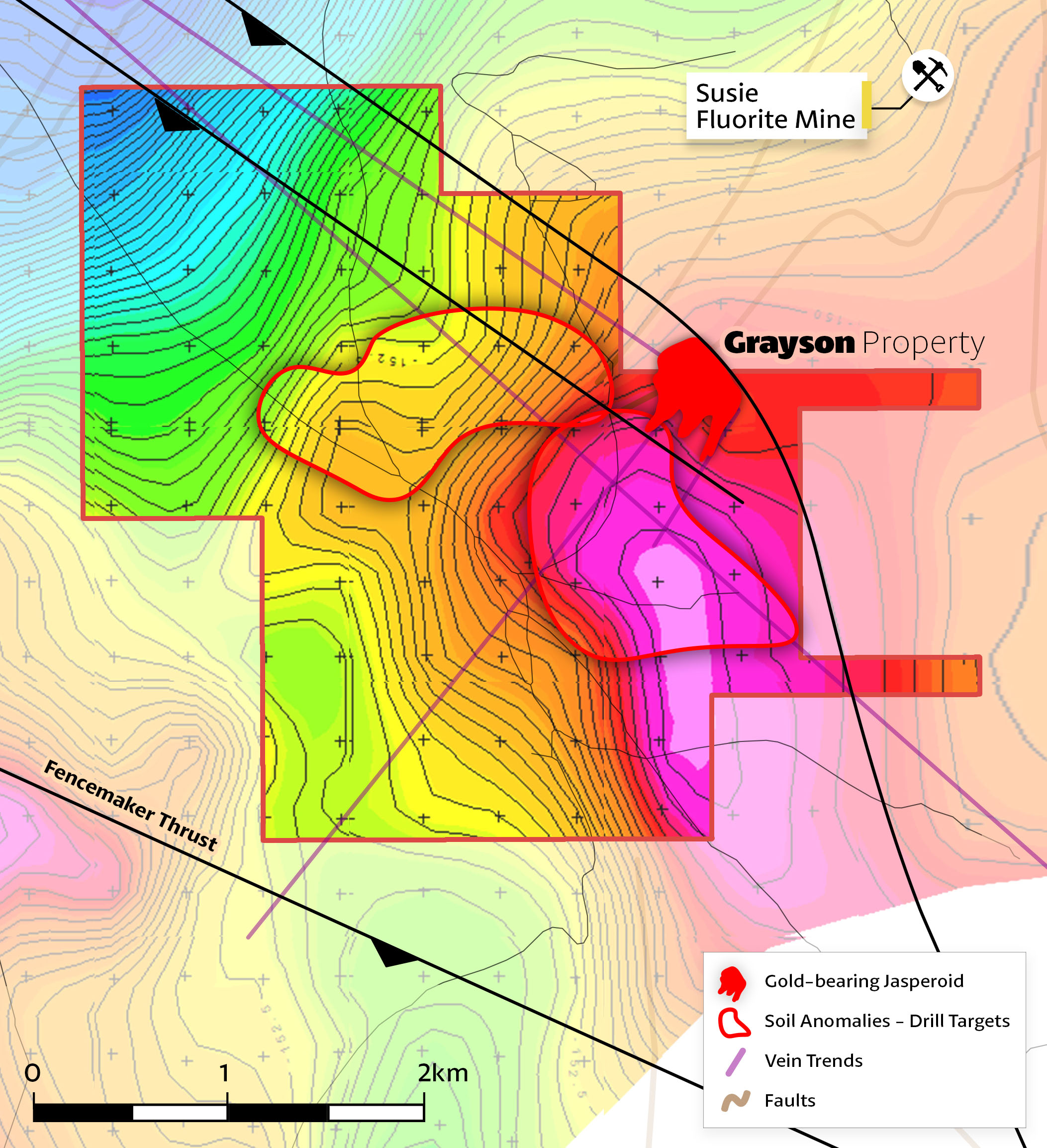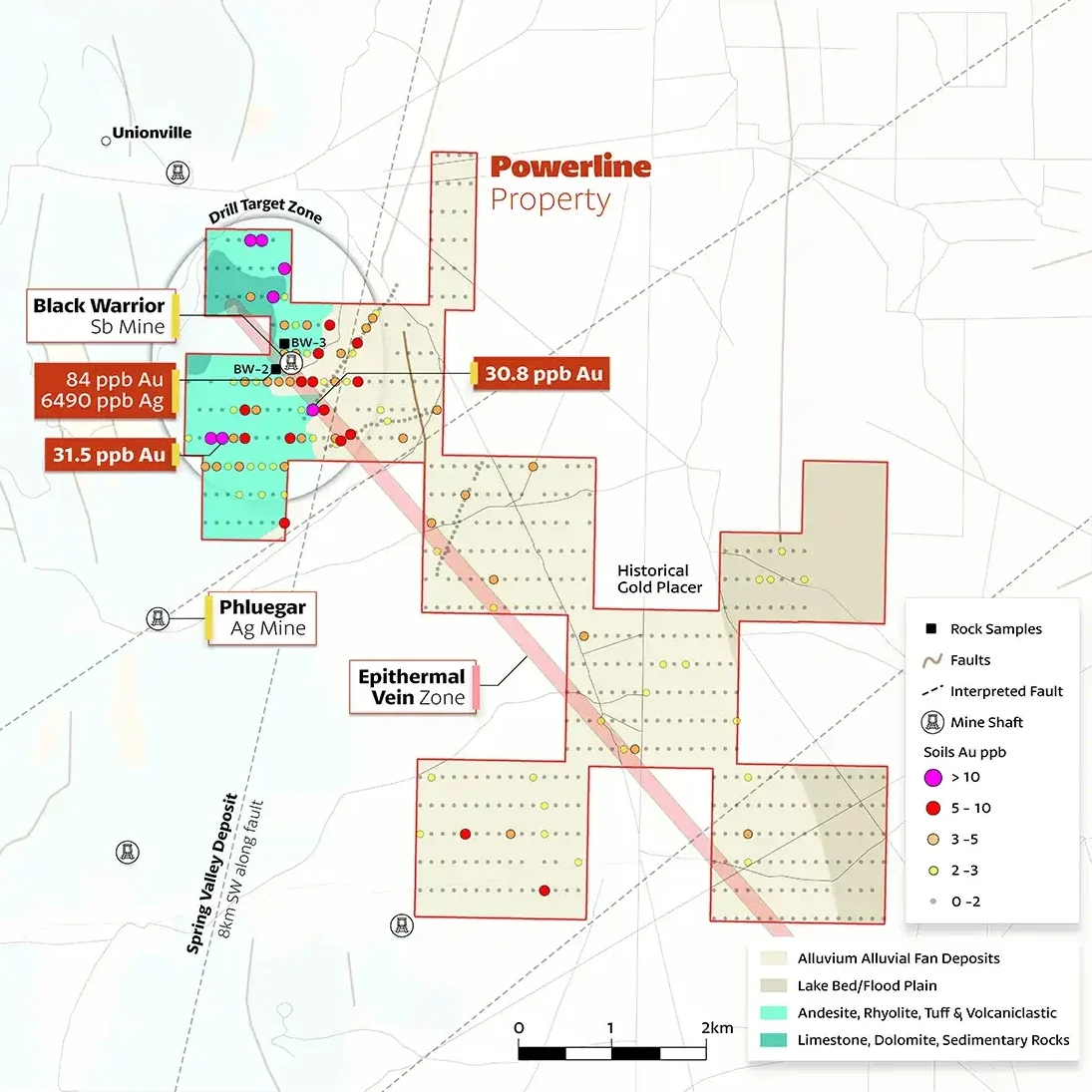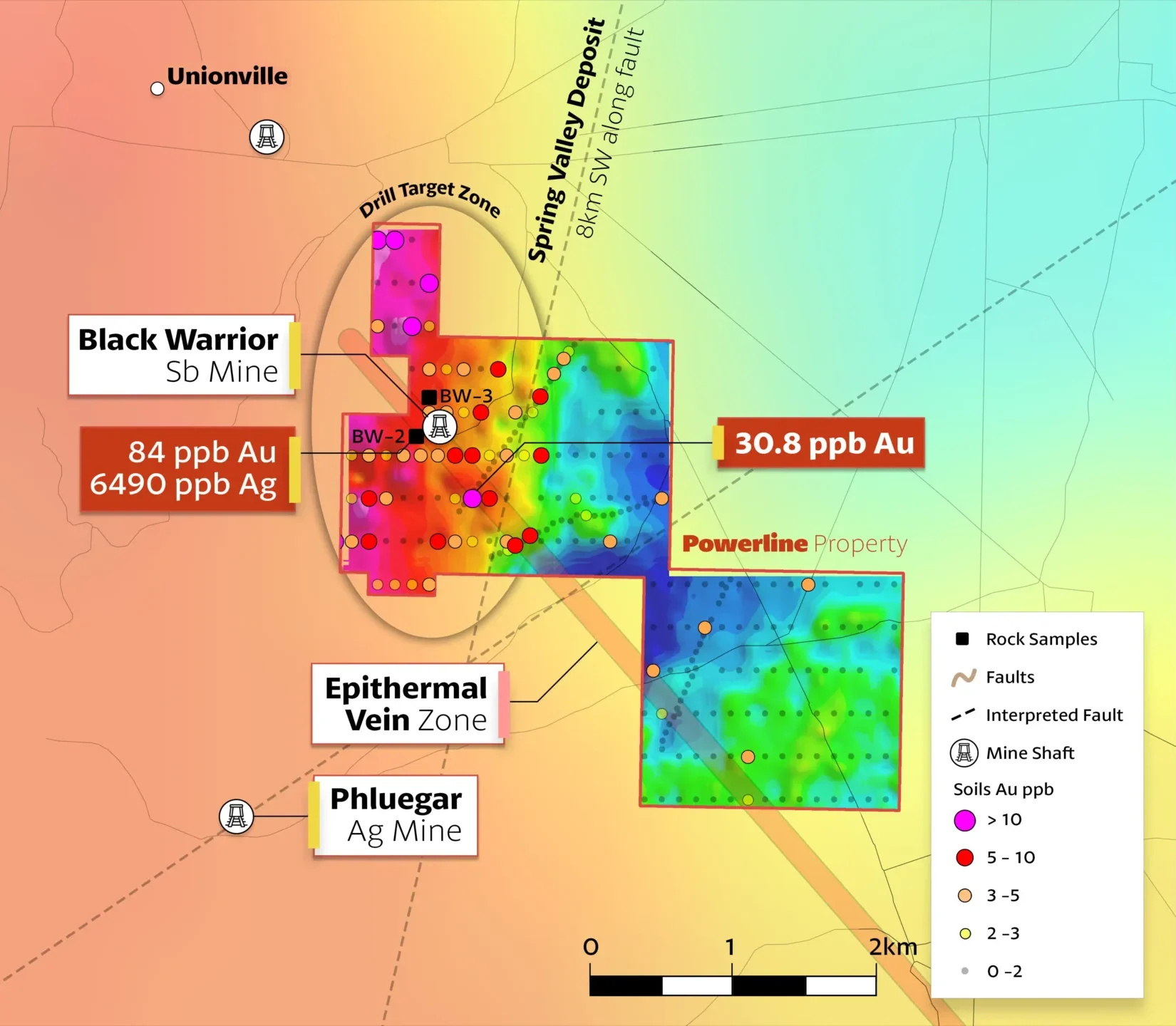Why Nevada?
Nevada presents a unique blend of abundant resources, a supportive regulatory environment, and a focus on innovation and sustainability, making it an ideal location for mining investments.
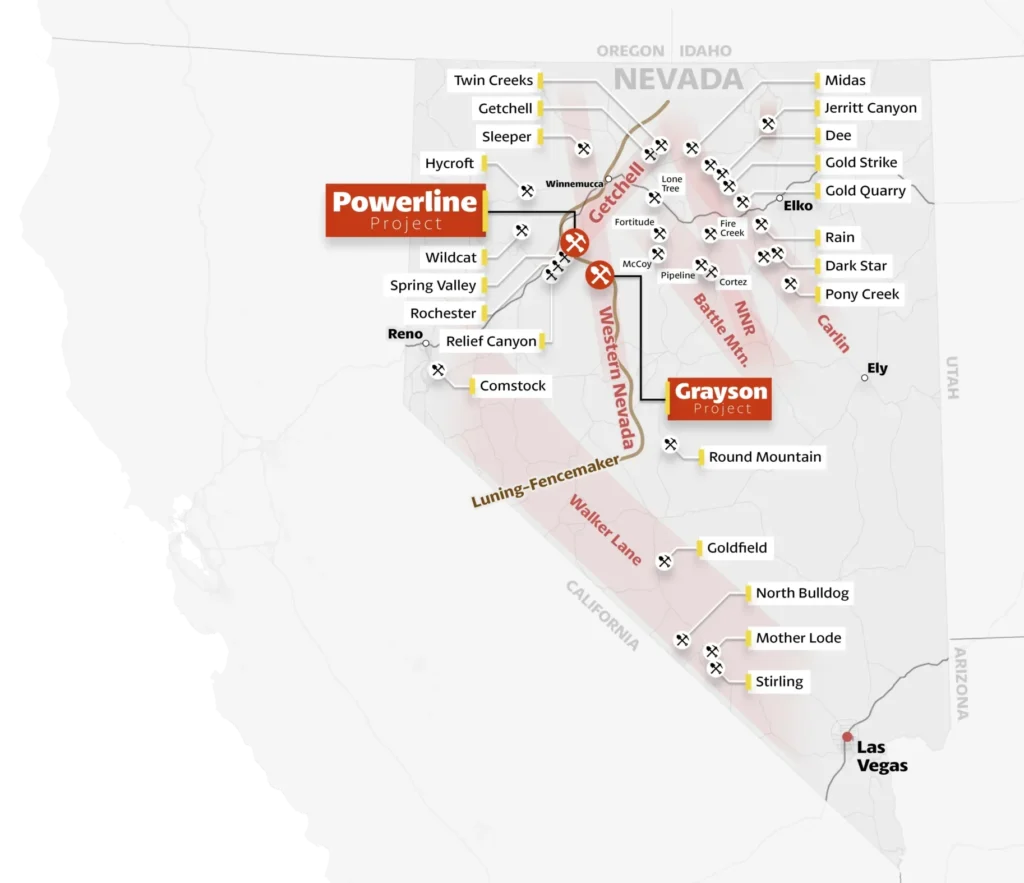
Abundant Mineral Wealth:
Rich in deposits of gold, silver, copper and more…
Skilled Workforce:
A workforce skilled in mining-
related fields
Investment-Friendly Regulations:
Balance between
resource development and environmental stewardship
Proven Gold Producer:
One of the top gold producers globally, with significant reserves and a successful track record.
Geological Diversity:
Robust Infrastructure:
includes extensive transportation networks and proximity to major ports, ensuring efficient resource transportation and successful project execution.
Stable Political Landscape & Strategic Market Access
Grayson & Powerline
Exploring the
Gold Potential
District Highlights
Nearby renowned past and current producing mines including Relief Canyon, Coeur-Rochester Mine, and Spring Valley Deposit
- Getchell trend, a northeast structural trend known for its sizable deposits: 19.4 Moz Au produced and an endowment of 42.5 Moz Au
- Gold Pathfinder Mines in the district: antimony, mercury, and fluorite mines within the range signals high potential. Historically, these elements have been found on the peripheries of large gold deposits, acting as reliable pathfinders.
Grayson & Powerline
Exploring the
Gold Potential
District Highlights
Nearby renowned past and current producing mines including Relief Canyon, Coeur-Rochester Mine, and Spring Valley Deposit
- Getchell trend, a northeast structural trend known for its sizable deposits: 19.4 Moz Au produced and an endowment of 42.5 Moz Au
- Gold Pathfinder Mines in the district: antimony, mercury, and fluorite mines within the range signals high potential. Historically, these elements have been found on the peripheries of large gold deposits, acting as reliable pathfinders.
Grayson
Strategically situated on an alluvial/volcanic covered pediment.
26km southeast and on strike to the Relief Canyon Mine with similar stratigraphic and structural controls
128 claims registered; 783 other claims staked. 7,613 Hectares
Powerline
Strategically located 8 km northeast of the Spring Valley gold deposit along a southwest extension of the prominent Getchell trend
Drill ready with promising targets pinpointed by a strong alignment between mapped structures, geochemical data, and magnetic anomalies
84 claims registered; 132 claims staked.
1,913 hectares
Grayson
Epithermal Gold
The Grayson Project is an epithermal gold target where strong silicification along Mesozoic thrust faults, intersected by Tertiary high-angle feeder faults, has yielded 0.65 g/t Au at surface in jasperoid after Triassic limestone.
The stratigraphy and structure are very similar to that hosting the 800,000 ounce gold resource at Relief Canyon, along the same thrust faults, 28 km to the west.
Grayson
Targeting Epithermal Gold Potential
Grayson
Targeting Epithermal Gold Potential
Grayson Soil Geology
The Grayson Project sets its sights on epithermal gold system, drawing parallels with the yields of the +800koz au Relief Canyon Mine. Preliminary surveys, including positive soil and rock sampling results, bedrock mapping, and ground magnetic and gravity studies, underscore its potential.
7,600-hectare project
Encouraging Preliminary Results: Rock grab samples from silicified units have shown gold values peaking at 647 ppb.
A strong alignment between mapped structures, geochemical data, and magnetic anomalies pinpoint promising drill targets.
Favorable Drilling Conditions: Recent gravity surveys over the property’s central and southern sections have identified viable drill depths beneath the alluvium cover.
Drill ready: Drilling permits are being processed
Antimony, Arsenic, More
Powerline
Targeting Epithermal Gold Potential
Powerline
Targeting Epithermal Gold Potential
Powerline Detail View
gold-rich premise.
Striking similarities with Waterton’s esteemed Spring Valley Deposit
(2014 M&I resource: 4.12 Moz Au + Inf: 0.99 Moz Au):
- Shared structural trends
- Altered lithologies – rhyolites, siliciclastics, and carbonates in the Humboldt Range.


